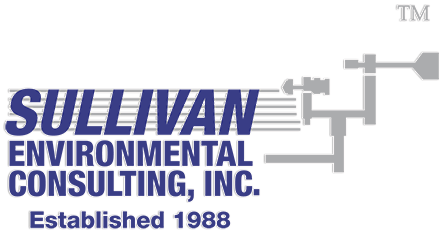- info@sullivan-environmental.com
- 1900 Elkin Street, Suite 200, Alexandria VA 22308
- (703) 780-4580
Landfills are essential to communities to manage municipal waste in an environmentally responsible manner. They also are a large source of the release of the greenhouse gas methane. In some cases, landfills also produce significant odor complaints, most notably associated with the release of the gas hydrogen sulfide, which is a gas with a low odor threshold and foul-smelling rotten eggs odor. Depending on the sequencing of the cells at a landfill, certain areas may release more or less gas, i.e., the releases are not necessarily uniform across the full extent of the landfills. Odors and other releases can be monitored by our staff or modeled by our staff using dispersion modeling software such as AERMOD.
Sullivan Environmental has expertise in characterizing complex fugitive area sources that can be brought to bear on landfill impacts. We have refined two techniques that can be used to compute emission rates of chemicals such as hydrogen sulfide: (1) a profile method where we collected concentrations and wind data along masts between 0.3 and 3-6 m and rely on the integrated horizontal flux method, and/or (2) the back-calculation method where we rely on measured concentrations around the perimeter of the source in conjunction with normalized air quality dispersion modeling to back-calculate the emission rate. If there are multiple areas to be assessed, multiple source areas can be assessed on a concurrent basis, with sufficient upwind monitoring at each area to promote isolation. The back-calculation approach also could be used to evaluate composite airborne emissions from wastewater lagoons.
Once emission rates are identified, then air quality dispersion modeling can be used to display expected worst-case, average, and percentile frequency analysis relative to odor thresholds. We rely on the AERMOD dispersion modeling in most modeling applications. We also use the CALPUFF model for certain applications.
Sullivan Environmental has extensive air quality monitoring equipment to support our air quality programs, including the following (partial list):
- 40 solar-powered, self-contained air quality sampling systems that can address a wide array of air pollutants based on validated methods.
- 15 sonic anemometers to support multiple meteorological sampling profiles to complement air quality monitoring and support data interpretation.
- 2, 3-dimensional sonic anemometers to provide heat flux data, and three-dimensional turbulence data to further support air quality modeling initiatives.
- 3 Odor sampling systems to support the collection of odor samples for presentation to odor laboratory panels.
- 2 soil monitoring systems to measure soil temperature and soil moisture at multiple sampling depths.
